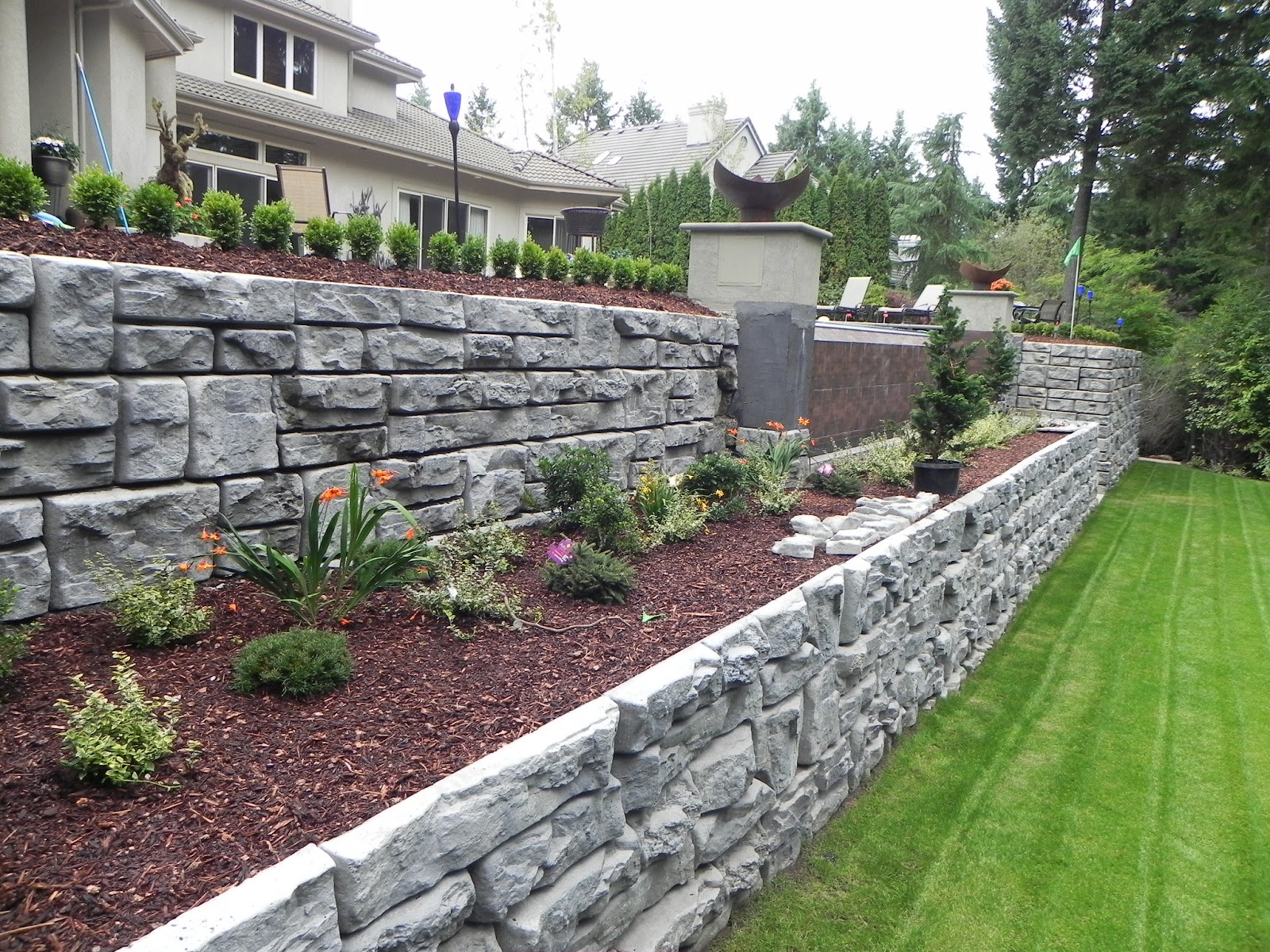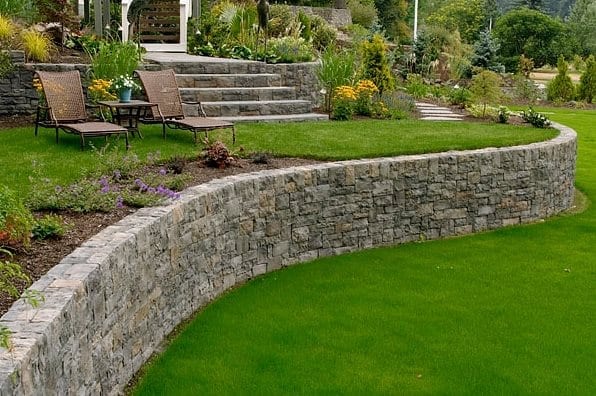How Retaining Walls Sunshine Coast Add Value and Performance to Your Building
Enhancing Building Stability: The Function of Retaining Walls in Soil Retention and Erosion Control
Maintaining wall surfaces stand as silent guardians, playing an important role in dirt retention and erosion control. By discovering the nuances of different types, layout considerations, construction methods, and maintenance tips associated with preserving walls, a deeper understanding of their crucial duty in boosting home security emerges.
Significance of Retaining Walls in Stability
The value of retaining wall surfaces in making certain stability within landscapes can not be overstated. Preserving wall surfaces play a crucial function in holding back soil, stopping disintegration, and producing level surfaces in sloped locations. By providing structural assistance, retaining wall surfaces assist to rearrange side stress triggered by soil, avoiding landslides and slippage. Along with enhancing the aesthetic charm of a home, maintaining wall surfaces add to the general security and capability of outside rooms.
Preserving walls are specifically crucial in hilly or uneven terrains where soil disintegration is a typical event. Without adequate support, soil erosion can result in the destruction of landscapes, compromising the stability of frameworks and posturing risks to occupants. Retaining wall surfaces serve as obstacles, maintaining the soil and preventing it from moving downhill throughout hefty rainfall or various other ecological stressors.
Additionally, preserving walls provide lasting advantages by reducing upkeep costs connected with soil disintegration and land instability. By spending in properly designed preserving wall surfaces, property proprietors can make sure the longevity and sustainability of their landscapes while advertising a risk-free and aesthetically enticing atmosphere.

Kinds of Retaining Walls for Erosion Control
Gravity preserving walls are strong frameworks that rely on their weight to stand up to the stress of the soil behind them. Cantilever maintaining wall surfaces, on the other hand, are designed with a thicker base and use a bar arm to stand up to the soil stress.
For taller wall surfaces or where area is a restriction, anchored retaining wall surfaces are commonly used. These wall surfaces make use of cables or strips that are anchored right into the soil or rock behind the wall to give extra assistance. An additional kind, the sheet pile keeping wall, is excellent for areas with soft dirt. Retaining Walls Sunshine Coast. These walls include interlacing sheets that are driven right into the ground to create an obstacle versus soil disintegration. When selecting the ideal kind of preserving wall surface for erosion control, factors such as dirt composition, wall surface height, and website problems should be very carefully taken into consideration to guarantee lasting stability and effectiveness.
Design Factors To Consider for Soil Retention
Incorporating the concepts of structural engineering and environmental sustainability is vital when considering design elements for reliable soil retention services. When making for dirt retention, it is crucial to analyze the certain needs of the website, including soil structure, water drainage patterns, and slope security. The elevation and place of the keeping wall surface are crucial factors that affect the overall layout. Engineers must additionally consider the stress applied by the preserved soil and prospective lateral tons to guarantee the framework's stability gradually.
Furthermore, the product choice for the retaining wall surface is essential in boosting longevity and capability. Concrete, hardwood, gabion baskets, and natural rock prevail materials made use of in maintaining wall surface building, each with its one-of-a-kind advantages and factors to consider. Appropriate drain systems, such as weep holes and French drains, must be integrated into the style to avoid water accumulation behind the wall, which can lead to structural failing and disintegration.
Building And Construction Strategies for Preserving Wall Surfaces
When implementing design considerations for effective soil retention, the construction strategies for keeping walls play a crucial function in making sure structural honesty and long-term stability. The success of a maintaining wall mainly depends on the building approaches employed. One usual technique is the gravity wall, which relies upon the weight and mass of the wall itself to stand up to the stress of the preserved dirt. Gravity wall surfaces are ideal for reduced to medium heights and are reasonably easy to construct. Retaining Walls Sunshine Coast.
An additional extensively utilized construction method is the cantilevered wall surface, which uses a concrete piece foundation that prolongs backwards into the preserved dirt. This design supplies added security and is appropriate for tool to high keeping wall surfaces. For taller structures, strengthened dirt strategies such as using geogrids or dirt nails can be used to improve the wall surface's strength and security.

Maintenance Tips for Residential Property Security
To ensure long-lasting building stability, routine upkeep techniques are essential for protecting the stability additional info of avoiding and maintaining wall surfaces disintegration issues. Examining maintaining wall surfaces occasionally is crucial to identify any indications of damage, such as fractures, bulging, or you can look here leaning. Any type of problems must be resolved without delay to prevent additional degeneration. Cleaning up the surface of the keeping walls can likewise aid maintain their structural integrity by removing dirt, particles, and plant life that can compromise the wall in time (Retaining Walls Sunshine Coast).
Along with aesthetic assessments and cleaning, it is vital to inspect the drainage systems related to the keeping wall surfaces. Making sure that drains are free from obstructions and operating appropriately can avoid water build-up behind the walls, which can cause pressure and prospective failing. Appropriately functioning drain systems are important for taking care of water flow and decreasing the threat of erosion.
Regularly maintaining and checking keeping wall surfaces according to these tips can extend their lifespan and add to the overall security of the residential or commercial property.
Verdict
In verdict, preserving wall surfaces play a vital role in enhancing home security by preventing dirt erosion and keeping dirt in area. Regular upkeep of retaining wall surfaces is essential to make sure long-term security and security versus erosion.
For taller walls or where space is a restraint, secured preserving wall surfaces are usually used. These walls use cables or strips that are anchored right into the dirt or rock behind the wall to provide added assistance. When picking the proper type of retaining wall surface for erosion control, factors such as dirt composition, wall elevation, and site problems need to be thoroughly taken into consideration to make sure lasting security look what i found and effectiveness.
One typical strategy is the gravity wall, which depends on the weight and mass of the wall surface itself to withstand the stress of the retained dirt. Cleansing the surface of the retaining walls can additionally aid keep their structural stability by eliminating dirt, particles, and plant life that could deteriorate the wall surface over time.